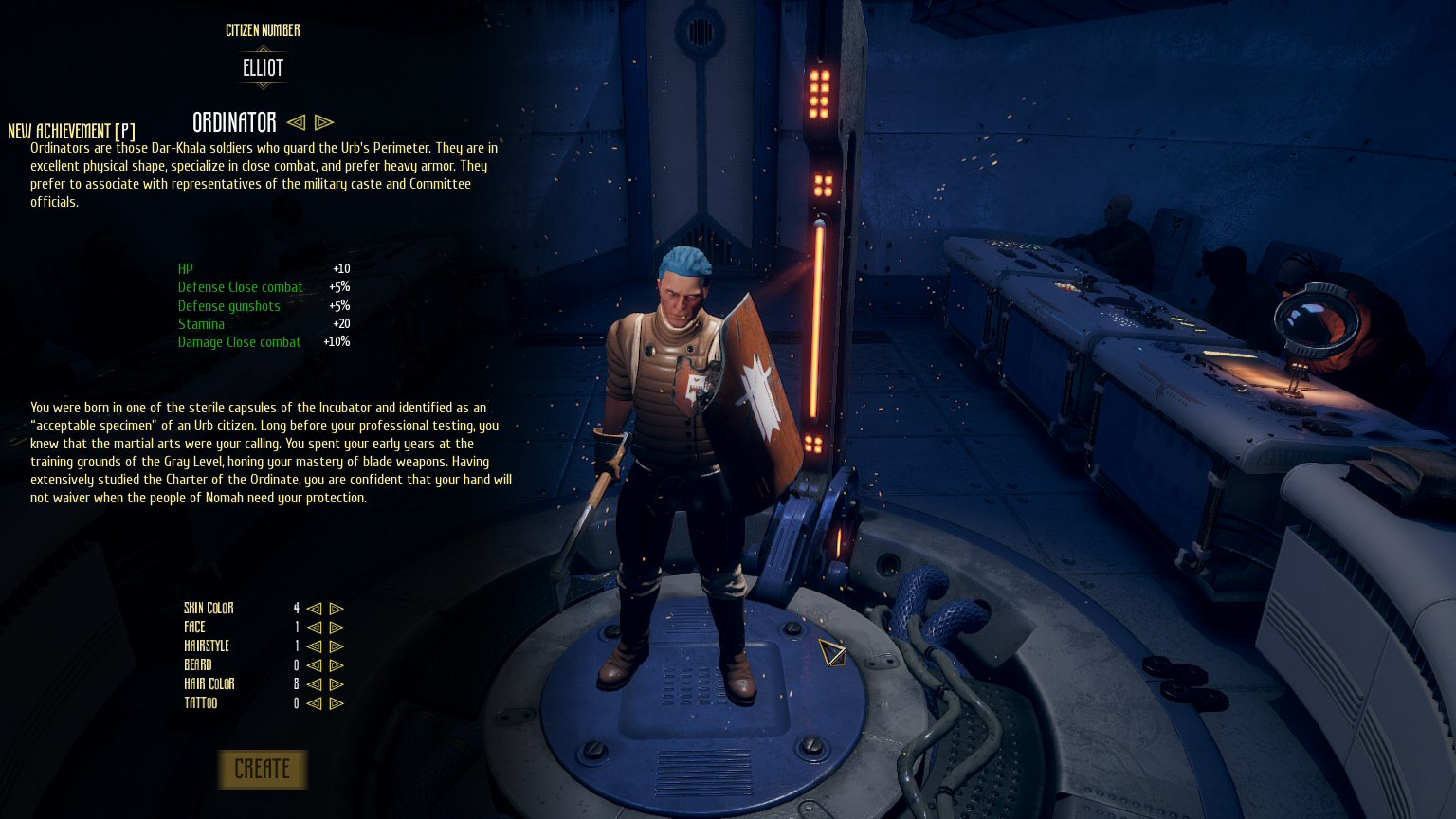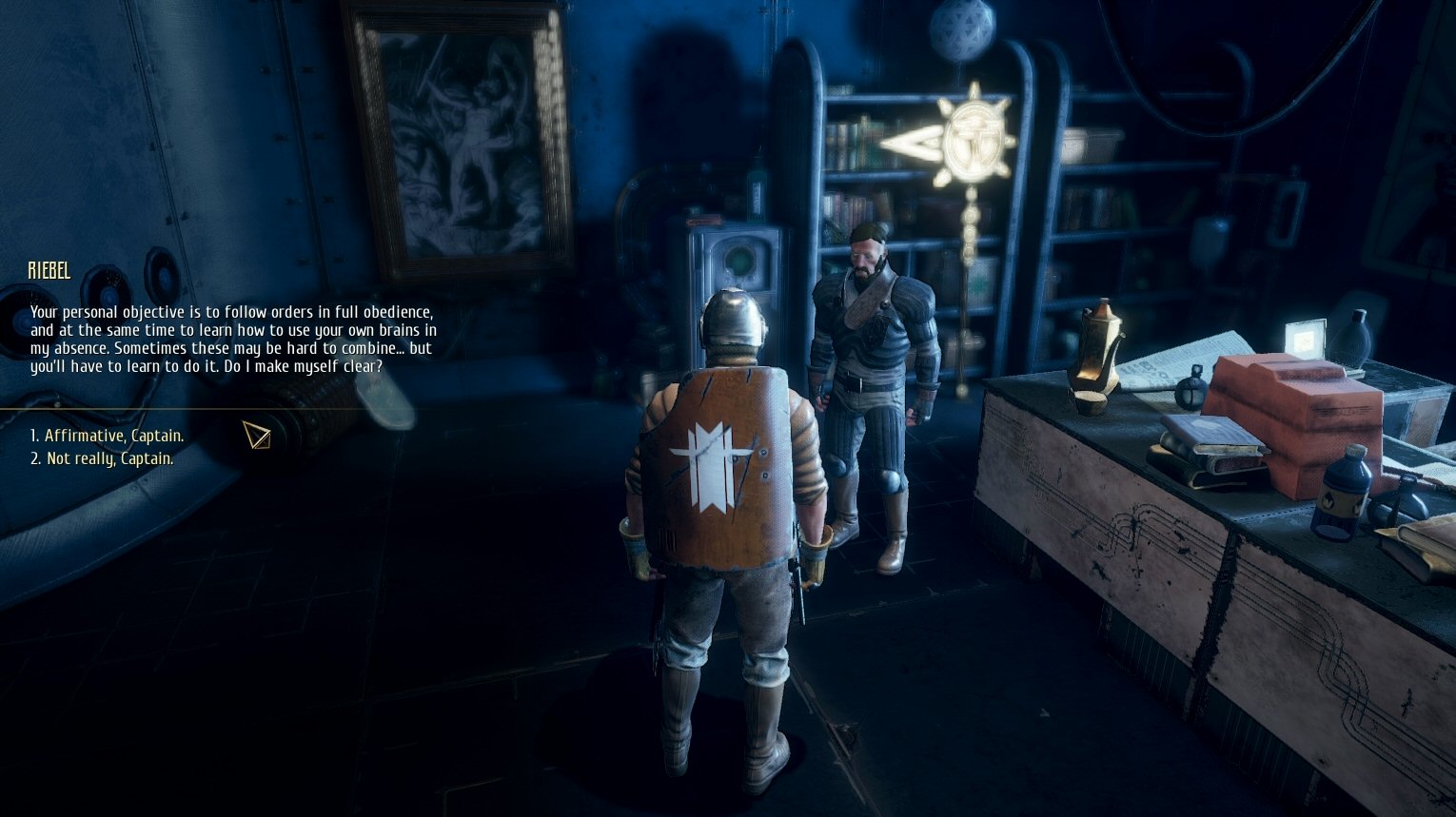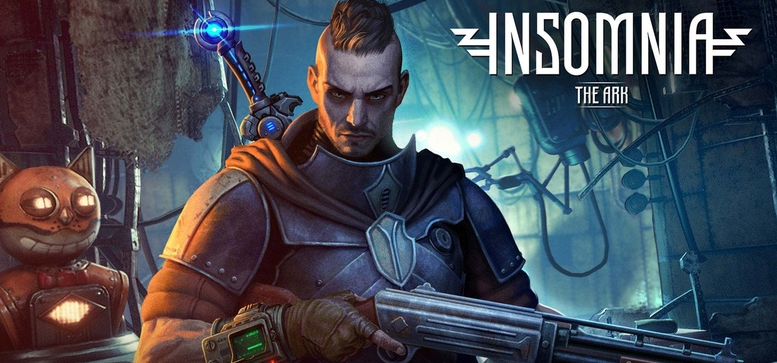An ambitious dystopian RPG with a huge, rich world but a few rough edges.
Type: Single-player
Genre: RPG, Action
Developer: Mono Studio
Publisher: HeroCraft
Release date: 28 Sep, 2018


The Premise
We wake up in a hospital bed aboard a massive space station that’s the only surviving relic of human civilisation. Millions of people live aboard this space station, getting by and trying to survive. Civil unrest is the normality here, tensions happen all the time, and most parts of this station have a military-like rule. This game takes us on a journey through this gritty and dystopian ‘ark’ of human civilisation, where we would encounter all sorts of political secrets, factions in conflict with each other, and environmental dangers, as well as unusual paranormal activity.
Story and Setting
The game has a really good world-building. There are a lot of details about the ‘ark’ and the societies living within it and we get familiar with it all when talking to NPCs and doing sidequests. There are various military groups, mercenary groups and other factions. People are divided into settlements aboard the station, with some settlements ending up being full of rebels and radicals. Some are full of people who live on the streets or abandoned buildings. As you’ve probably noticed, the setting is very dystopian and post-apocalyptic, in the same vein as the likes of Fallout games and some indie RPGs such as Technomancer/Mars: War Logs.
In addition to the dystopian feel of this setting, the game also has elements of paranormal, which affect people’s sanity and cause hallucinations. On some occasions, we get to visit these visions and worlds as part of our quests.
There are many sidequests in the game. We can often receive these by simply talking to NPCs. Some are simple fetch quests, while others have nice and interesting mini-stories that enhance the world-building. We can do them at various times in our playthrough, and so the game feels more like a non-linear sandbox RPG than a linear one in this regard.
Due to so many areas and quests and a lot of travelling in-between areas, the game is quite lengthy if you want to experience it to the full.

Role-playing
Insomnia: The Ark is pretty much like a standard RPG with dialogue choices, variety of skills to level up, plenty of gear to find, crafting mechanic and the like.
Perhaps it’s worth to start off with an explanation about the map. From time to time we get to come back to the station map, and from there we can pick which location to go to. The locations unlock over the course of the game as we make progress in the story or in sidequests. When we traverse the station between the locations, in-game time starts going, and we could come across some new locations while travelling, or at times have random events happening, such as stumbling onto a small area filled with enemies which we must cross in order to continue moving forward through the map (a bit like a random encounter).

There are many elements of role-playing in the game. Right from the start, we get to customize our character’s look (although the options are very limited) and also choose their class. The classes are weaved into the game’s world-building and offer more than just bonuses to specific stats. We’re not only choosing our preferred gameplay style here (hand-to-hand proficiency, guns expertise, skill with computers, etc), but also our character background. Being of specific background can unlock dialogue options in some conversations. For example, I was playing as the Ordinator class, which is essentially a soldier, and in some conversations, I was able to use this as leverage to get someone to obey my request. This kind of role-playing can feel quite rewarding and creates a good replay value, because it makes us curious to try the whole game with another class for a different experience.

There are plenty of different skills areas to level up and improve, which open up different ways of getting past challenges the game throws at us. The skills vary from combat-related to non-combat. There are proficiencies for different types of weapons that we can improve, akin to Deus Ex and Fallout games, so it helps to plan what weapon types you’d stick with for the whole game. From what I experienced, it helps to have some way of fighting both at range and up close, depending on the situations we find ourselves in. There are also a variety of other passive skills with different bonuses, such as being able to carry more stuff to higher resistance to damage and even resistance to insanity. Sadly though the level ups happen rather rarely, and with so many important skills to go for, you’d often be faced with a dilemma of what to go for, so you won’t be able to be good at several things and might need to either specialise in one or two things or just spread your skills thin across several domains. Most of the experience points are gained through combat, but at times we gain some of them from other activities too, such as crafting items and reading in-game books.
Combat
Combat is an area I have somewhat mixed feelings on. The game offers us many weapon types: there are plenty of melee weapons to use upclose, as well as shields for protection purposes, there are many firing weapons such as pistols, shotguns, machine guns, and there are also explosives we can throw for extra punch and firepower in combat. So, the options are pretty abundant. However, some of the handling can feel strange at times and combat can feel a little clunky in some instances. For example, we can only move the camera left and right, and not up and down, or when aiming a grenade throw, the range is pretty small and often means we have to expose ourselves to enemy gunfire.
The difficulty also seems rather uneven. You could be having a cakewalk in one area and then be faced with a sharp difficulty spike in the next, which will cause you to die and reload numerous times, having to spend big chunks of your game time in a loading screen rather than playing the game. The game doesn’t have a cover system, but taking cover is important in virtually every firefight, because you can die very easily. At times though it’s not clear how well you’re protected by cover, and enemies could get an occasional lucky shot to hit you if the cover is not so big. Some enemy types, such as turrets, can feel especially frustrating to deal with, as they are heavily armoured and are barely harmed at all by bullets or melee weapons or even most explosives. You need only a specific type of explosives (or possibly a few other weapons) to deal with them, and if you’ve run out, you’re doomed and have no way to get past them.
Most combat scuffles do feel pretty fun though, and with odds always being against you, it can feel rewarding to take down groups of enemies single-handedly. You can also get some NPCs to join and assist you, though you’d often have to do their sidequest first before you can get them to follow you around. It’s great that the game offers this option, as it can help out with many of the harder combat areas.

Survival and Additional Game Mechanics
In some dungeon areas, we can also expect other dangers: one that comes up from time to time are landmines. They are not always easy to spot among all the junk laying on the floor, and unfortunately, we don’t get any kind of warning when we enter an area that’s full of them, so you could end up coming across an unpleasant surprise with the mine exploding and knocking half of your HP off. If you do manage to spot it, you can interact with it, which then makes us do a timed mini-game. If we manage to complete the mini-game, we get to deactivate the mine and gain some explosive charges which we can use to later craft our own explosives. If not, the landmine blows up in our face.
Another danger that pops up in dungeons from time to time is the paranormal stuff. The game has a theme of paranormal events occurring aboard the space station, which drive anyone caught in them insane. Our character happens to be more resistant to these things than most NPCs, but even we can succumb if we get hit by too many of them in short time. Some of these paranormal bits can take form of unusual shadowy beasts that pop up and damage our character’s sanity before disappearing again, so at times we need to be careful when exploring darker, more abandoned locations. I personally wasn’t fond of some of these, as they really limit exploration and just encourage us to go straight from A to B instead in the areas where they occur.
Aside from landmines, we also come across mini-games in other instances, most notably when hacking computers and also when picking locks. This is something I really didn’t like in the game, mostly because all these mini-games are timed, and the time is very slim. Oftentimes it’s not enough time, and we have to rely a bit on luck to get these solved. The lockpicking mini-game with the spinning circles can feel especially pretty fiddly and require manual precision, which will be a huge annoyance to some players who don’t have fast reactions. In addition, many of these mini-games first require us to use a resource, such as a lockpick or a circuit board, before we can even attempt them, and if we fail a mini-game, the resource is lost. Most of these resources are quite hard to come by, so failing a mini-game just encourages us to reload from a previous save and try again, which is no fun at all.

Lastly, this game has some survival game type mechanics. These include hunger, thirst, crafting, item durability, and limited inventory load. We don’t get any indication of how hunger and thirst affect us. We don’t lose HP, but they could be causing other debuffs which we’re not aware of. So, we have to buy food and water often to replenish our hunger and thirst meter. I think this mechanic is handled a bit bad though, because it seems to operate on game time rather than progress made. You could be simply walking around and exploring and need to replenish your hunger and thirst, meaning if you’ve not made enough money from sidequests in that time, you’ll have no way of buying food and water and get debuffs to your stats. I think if this was handled based on actual progress made in the game, it would’ve been better. That way players are not penalised for spending time to explore the locations or on other activities such as crafting and the like.
Crafting is handled pretty well. During the game, we find various books and recipes for how to craft certain objects. Once we read those, we can then craft those items at workbenches, providing that we have sufficient resources available. This can be pretty nice and lets us make some of our own ammo, grenades, and other useful things. We also need to use crafting materials to fix any worn out or broken equipment. The more we use our weapons, the more worn out they become, and if their durability gets too low, they will start to jam and cause problems. This adds a nice management of our resources and makes us prioritise what is important and what isn’t.
The inventory management can feel pretty annoying though. It operates based on item weight and us being able to carry a limited amount. We can go over the weight limit of what we can carry, but that starts creating penalties for us, such as inability to sprint, and at some point to move altogether. With so many items in the game though, you will find yourself being overloaded very quickly. You can store your stuff in lockers in some hub areas, but you don’t know when you’d come back to that location next, so you’re tempted to hold most items with you and run around being overloaded. Sometimes you’d be searching for the item you want in your inventory as the space you see is only a portion of your inventory and so you’d have to scroll. This gets particularly inconvenient when buying and selling stuff, because strangely enough the money tokens are also treated as an item, so in order to know how much money you have, you need to find it in your inventory rather than to have a counter somewhere obvious. Not to mention, there is no way to compare the gear you’re currently wearing to the one the shops are selling, so you don’t know if you’re buying something that’s better or not unless you have a photographic memory of all your gear’s stats. So, I think the inventory management and buying and selling could’ve been streamlined better so not to be so time-consuming.

Presentation
Reasonably good visuals that provide a believable atmosphere of a rundown space station that’s seen better days. There’s been a lot of attention to detail given in most areas. Plethora of junk scattered about in every area, homeless people, soldier patrols, partially-broken structures, antique items, and so on. It’s a place where everyone is just getting by, even those of high status, and the game has shown it very well.

There isn’t much background music aside from ambient sounds and drones, but in some places, there’s music coming from the radio devices, most of which is early 20th-century type of music, much like Fallout’s setting. Sound effects are all good and distinct for different types of items and actions.
There is no voice acting, which feels a little strange for a game like this. Not even from NPCs. So be prepared to read all of the dialogue. Although this is understandable as an indie game of this size could be out of budget if it had to invest in voice acting, so perhaps that had to be sacrificed in the grand scheme of things. The only voice acting you’ll come across would be in occasional cutscenes and on random intercom messages and radio. Those things are nice for the atmosphere, but at times they can be a little distracting when you’re trying to read the dialogue.
You might come across occasional bugs. From the ones I’ve seen, there was nothing major or game-breaking, but there are some glitches such as NPCs getting stuck, or UI glitching out on the side of the screen (such as with Thirst and Hunger warnings at times). There also seem to be missing translations in a few rare parts, and you’d just see the action description or an item description in Russian. Also, strangely enough, the game doesn’t always like to be running if you have Google Chrome open, so if it fails to launch, you have to close Chrome first.

Verdict
This is a super ambitious RPG for an indie team. For the most part it’s pulled off well and has its own personality. Most aspects of it feel like a hit, but there are also some questionable design decisions and inconveniences that may frustrate you or simply dilute down the overall experience. The game has a rich world-building and backstory and clearly has gotten a lot of work and attention during its development, and it offers a variety of different ways to play it. I would give it a ‘Save for Later’ rating, but I’d consider it a high end of ‘Save for Later’, almost bordering on ‘Save’.
So, if you are fairly new to RPGs, I would recommend you to go for something else, as there are better and more streamlined RPGs out there. But if you’ve played many of the top end RPGs already and are looking for something new to sink your teeth into, then ‘Insomnia: The Ark’ might just be what you need, so long as you don’t mind a few rough edges in the gameplay. I’d especially recommend it if you enjoy this type of post-apocalyptic setting and have already played Fallout games and Technomancer/Mars: War Logs and want more of the same thing.










